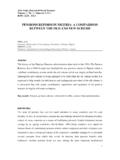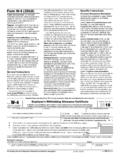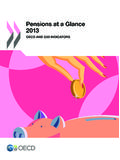Transcription of Review of current CHP situation in Italy: Energy …
1 Review of current CHP situation in Italy: Energy related policies, regulations and market liberalisation impact by Wen Guo, OPET ISNOVA. The application of CHP in Italy on the whole is relatively diffused. Especially from the production point of view, the quantity of Energy produced by CHP is significant. In absolute terms, in 1999 CHP electricity produced by Italian Energy industry amounted to TWh, corresponding to of the total national electricity generation [source: Industrial power producers in Italy edition 1999, UNAPACE]. Comparing with other Member States, Italy is the second EU country where CHP electricity generation is high [source: EUROSTAT 1998]. However, if we analyse the micro-small CHP (with the capacity < 1 MWe) diffusion, the situation will be completely different: many European countries, comparing with Italy, have been obtaining not only a growing diffusion of electricity production from renewables but also the major penetration of small CHP.
2 For instance, at the end of 2001, there were 14000 micro-small CHP plants with the total capacity of 3000 MWe installed in Germany [source: Dino Marcozzi, La Termotecnica, March 2003], while in Italy the installed capacity of micro-small CHP plants was only at the range of 238 MWe [data in 1999]. Energy related policies, regulations and market liberalisation Energy related policies and regulations After the cease of the inter-ministerial provision CIP 6/92 in 1997 (Inter-ministerial Committee for Price), contrary to the politic goals established in Kyoto Protocol, for a long time there was no real political programme supporting Energy efficiency in Italy; the feed-in conditions for independent electricity producers had not been regulated anymore. At this moment, there are various European and national directives and regulations already issued or in course of issue, aiming at promoting the development of CHP.
3 In particular, the EU directive for cogeneration [July 2002] has established the target: to double the CHP production share by 2010, corresponding 22% of electricity produced by Member States. According to the proposal made by the directive, Member States shall provide with economic supports for CHP and high efficiency technologies, the favourable grid connection and the simplification of approval procedures. the EU directive for Energy performance of buildings [2002/91/EC], issued in December of 2002, obliges owners of new buildings having the utilisable surface bigger than 1000 m2 to make CHP installation feasibility study. CIPE (Inter-ministerial Committee for Economy Planning) Resolution, issued recently within the framework of the national plan for reducing GHG emission, has established three important principles for small-medium CHP: 1) the definition of grid feed-in tariffs for surplus electricity produced by CHP plans having capacity less than 50 MWe; 2).
4 1. extension of the issue of Green Certificate to CHP plans having capacity less than 50. MWe for the saved part of Energy ; and 3) extension of Bersani Decree (see below) to industrial uses, based on these uses the White Certificate will be foreseen for CHP. production for civil use. Energy Efficiency Decree, issued in April 2001, has identified the quantitative objectives for the improvement of Energy efficiency in end-use in terms of Energy saving. Unfortunately, after one year of the issue, the related implementing decrees are still waiting to be established. The law 30/04/1976 n. 373, issued in 7 June 1976, establishes that public and private buildings must be designed to ensure maximum saving of both electricity and heat. In the present politic scenario, moreover, it is worth to mention the Carbon Tax'. introduced in Italy through the Law 488/1998. It is reasonable to consider the introduction of this tax as the sign of a deep diversity between gas used traditionally by boilers and gas utilised for electricity production.
5 The Law 448 has established the natural gas tax with a value of to /m3, varying according to the uses. As an exception, the tax for electricity generation will be /m3. The application of the Carbon Tax' is foreseen in 01-01-2005. Based on available data, it is expected that a convention for cogeneration will be made in the near future. Electricity market liberalisation On February 11, 1999, the EU directive on common regulations of the internal electricity market [96/92/CE] in relation with Energy market liberalisation was received in Italy with the so-called Decree Bersani . The decree has launched the reform of Energy sector through the separation of generation, importation, purchase and sell; and the separation of transmission and distribution. Moreover, the decree has defined the activities and the role of operators in this new market organisation. Observing optimistically the liberalisation decree, it can be noted that the cogeneration is mentioned explicitly in several articles: - dispatch priority for renewable Energy and cogeneration.
6 - the independent single buyer, who will supply all bound customers, has to procure a part of his electricity from renewable Energy and cogeneration;. - every operator, producing or importing more than 100 GWh/a has to procure 2% of his power portfolio from new renewable plants (with green certificate), power from cogeneration is excluded from this obligation;. - regional funds will be made available to support the construction of new renewable and cogeneration capacity, it is not defined yet how this financing mechanism will be implemented. In practice, however, the definition of the new framework for the liberalised electricity market causes a still persisting vacuum of unambiguous rules concerning electricity buy- back conditions for independent power producers. Up to now, it is not yet clear if the above-mentioned privileges will be translated in directives effective enough to boost the CHP (trigeneration) market.
7 At this moment what is sure is, according to the article 2 of the Decree Bersani , CHP. (trigeneration) will be distinguished from renewables and similarities (urban wastes, etc.)1, and will be regulated according to the conditions established by the Regulatory Authority of Electricity and Gas. 1. According to the Law 10/91, CHP generation was considered and treated as renewables, whenever the Energy efficiency can reach a certain value. 2. Natural gas market liberalisation The decree n. 164/2000 introduced in Italian gas market in relation with the EU directive on common regulations of the internal natural gas market [98/30/CE] has already produced gradually modifications in the sector. Starting from 1-01-2003 the Italian gas market is completely open. The decree establishes, together with the regulations and models for guaranteeing and developing the correct sectorial competitions, the following activities for gas sector: - importation and mining.
8 - transportation and dispatching;. - storage;. - distribution and sell. According to the decree, the Regulatory Authority for Electricity and Gas will be in charge of the establishment of the regulations for approaching the supply and service grids. Regarding to market offer side, however, SNAM spa the former natural gas monopoly is still a dominant operator in gas sector. Grants, state subsidies and other financial support relevant for CHP/CHCP. Nowadays, there are no specific incentives for cogeneration/trigeneration project in Italy, although theoretically, financial support for investments in CHP/CHCP (Combined heat, Cooling and Power production) plants is available on different administrative and regional levels. In practice, only one is most effective, , the tax exemption applied to natural gas used for cogeneration purposes. In fact, according to the regulation issued by the Regulatory Authority of electricity and gas, a part of the gas consumed by a CHP plant is tax-free.
9 In other words, if the electric efficiency of a CHP unit reaches or above, its entire gas consumption will be tax-free; while with an electric efficiency of only 88% of the gas consumed by the CHP unit is tax-free. Environmental legislation Atmosphere Emission One of earliest decrees related to atmosphere pollution control is the Republic President Decree n. 1391, issued on 22 dic. 1970, limitedly in thermal plant sector. At present, there are two regulations to control air pollution: - ministerial decree issued on 8 May 1989, which gives the emission limits to the pollutants derived from big combustion plants;. - ministerial decree, issued on 12 July 1990, gives the guidelines for limiting polluting emission from industrial plants and meanwhile establishes the minimum emission values. Noise Emission Internal combustion motor and turbines used by CHP system generate noise which must be controlled in certain limits.
10 current norm related noise control is the DPCM. Issued on 1 March 1991. The regulation establishes respectively the maximum value of noise emission to the plants installed in living and external ambient. In addition, there exist numbers of EU directives where noise limits have been established to guarantee the health of works. 3. Other aspects with influence on the development of trigeneration It is worth to underline that the viability of trigeneration project is strongly depended on the price of natural gas. One aspect may represent disadvantage for trigeneration development: the liberalisation of gas market, however, gives many uncertainty on future gas price. Especially, staring from 1999, the gas price was increased heavily even though it was decreased slightly at the end of 2001. If the price of natural gas will be increased further, the viability of a trigeneration scheme will be affected negatively.


